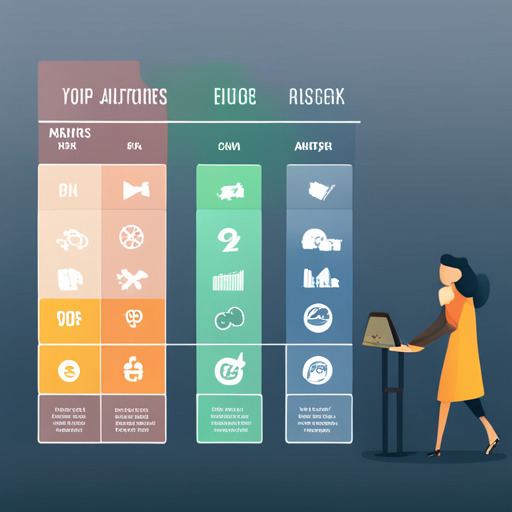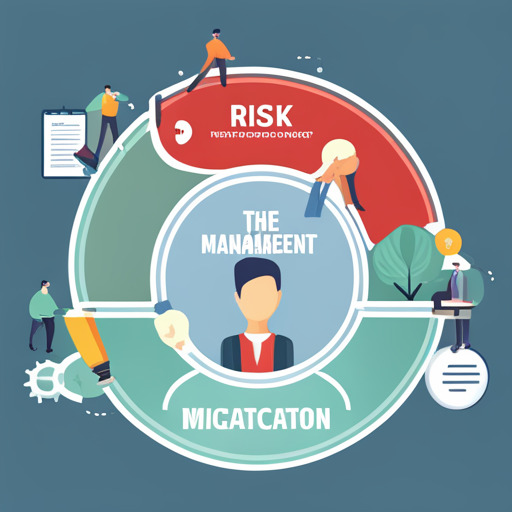#RiskRegister
Explore tagged Tumblr posts
Text
youtube
In this video, we delve deeper into Agile Estimation with a focus on Story Points. Learn what story points are, how to estimate them, and the benefits of using story point estimation. Subscribe for more Agile insights and techniques. #AgileEstimation #StoryPointEstimation #PlanningPoker #TShirtEstimation #JogoAgileCoaching
#jogo agile coaching#riskmanagementinagile#riskmanagementinagilescrum#jogoagilecoaching#jogocoaching#riskmanagementinscrum#agileprojectriskmanagement#AgileRiskManagement#riskmanagementinprojectmanagement#RiskManagementinanAgileEnvironment#WhatIsAgileRiskManagement?#agileprojectrisks#agileprojectriskassessment#riskmanagementinagilevstraditional#riskmanagementinagileproject#agileprojectrisklog#agilevswaterfallprojectriskmanagement#RiskManagementinanAgileLifecycle#Howtocontrol riskinagileproject#AsimpleapproachforRiskManagementinScrum#RiskManagementinAgileProjects#Managingriskinscrum#Managingriskinagile#TheartofAgileRiskManagement#RiskManagementandAgileTeams#RiskRegister#Riskburnddownchart#Risktrackerinagile#AgileProjectManagment#Youtube
0 notes
Text
risk register Understanding in Today's Economy: A Comprehensive
I. risk register Introduction:

A. First and foremost, it is crucial to emphasize the significance of risk management within the economy, as this aspect serves as a foundation for maintaining stability and supporting growth. In this ever-evolving world, various internal and external factors continuously influence businesses, making risk management an indispensable aspect of successful operations. B. Consequently, understanding the concept of a risk register is of utmost importance, in order to develop and maintain a resilient and proactive approach towards addressing potential threats. It is a valuable tool that enables organizations to identify, document, and manage risks effectively. By systematically addressing these factors, organizations can more efficiently allocate resources, as well as anticipate and minimize potential impacts.

C. As we proceed through this article, we will explore the following subheadings in more detail, thus providing you with a comprehensive understanding of the crucial elements of a risk register. This will include topics such as the process of developing a risk register, how to monitor and evaluate risk over time, and best practices for integrating risk mitigation strategies within your organization. Ultimately, by delving into these essential concepts, we aim to equip you with the knowledge necessary for successful risk management implementation.
II. Identifying Risks: The Initial Step

A. Firstly, it is crucial to emphasize the importance of being proactive in identifying potential risks to effectively manage them. B. Secondly, collaboration and contribution from various stakeholders are vital in developing a comprehensive risk register, which will ensure all possible risks are taken into consideration. C. Thirdly, there are three main categories of risks that organizations should be aware of: financial, operational, and strategic.
III. Assessing Risks: The Quantitative and Qualitative Approach

A. To begin with, quantitative risk assessment methods such as probability and impact matrices can help organizations objectively analyze risks. B. Furthermore, qualitative risk assessment relies on expert judgment and scenario analysis to assess potential risks and their consequences. C. Lastly, risk prioritization and establishing risk thresholds are crucial steps in the risk assessment process, ensuring that resources are allocated effectively.
IV. Monitoring and Controlling Risks: Mitigation and Response Strategies Risk record

A. First and foremost, regular monitoring plays a significant role in tracking and updating risks, allowing organizations to adapt their risk management strategies as needed. B. Additionally, implementing risk mitigation and prevention strategies can help organizations minimize the potential impact of identified risks. C. Finally, risk response planning for high-priority risks ensures that organizations are prepared to address challenges when they arise.
V. Risk Register in Various Economic Sectors Risk log

A. For instance, in the banking and financial sector, risk management is essential for maintaining stability and ensuring steady growth. B. Similarly, the manufacturing industry faces unique challenges related to production and supply chain risks, making risk management vital. C. On the other hand, the service-based economy must manage risks in the rapidly evolving digital market to stay competitive.
VI. The Connection between Risk Registers and Regulatory Compliance

A. First, transparency and communication with stakeholders play a crucial role in aligning risk management goals and meeting regulatory expectations. B. Moreover, risk assessment and reporting requirements are essential for maintaining compliance with industry regulations. C. In conclusion, regulatory frameworks directly impact risk management practices, making it vital for organizations to stay up-to-date with the latest requirements and adjust their risk management strategies accordingly. Risk Register Template on ProjectManagement.com
VII. Conclusion Risk inventory

A. In summary, it is essential to reiterate the paramount importance of risk registers in managing economic risks. As we have established throughout this article, the ability to identify, document, and manage risks is crucial for businesses to remain stable and support continued growth in an ever-changing world.

B. Furthermore, the need for continuous risk management and adaptation cannot be overstated given the dynamic nature of today's economic landscape. As businesses face a myriad of internal and external factors, having a systematic approach to tackling these risks will enable them to allocate resources efficiently, mitigate potential impacts, and pave the way for long-term success.

C. In light of this, we would like to emphasize the value of encouraging the adoption of risk registers across various sectors, spreading best practices and fostering a proactive approach to risk management. By doing so, organizations can contribute to not only their own success and resilience but also to the overall stability and growth of the economy at large. "Discover the latest tips and guides on finance management." Read the full article
0 notes
Text
This assignment provides the opportunity to review risk management practices and create handling actions for analyzed risks. To do this you will complete the following steps: · At the end of this assignment, you will submit your Risk Register - filled out with identified risks, risk analysis and risk response plans · For all required risks, identify the risk response. · Be very clear on the risk response strategy, how it will be implemented and the planning deliverables that will be changed to integrate the risk response. Do not just note that a risk will be mitigated – explain how it will be mitigated. What is the action plan for implementing that strategy? How do these actions integrate with other planning deliverables (i.e. what gets added to the WBS, does an estimate change?) · Re-asses the risk based on the handling actions- did the response strategy reduce the probability and impact below the threshold value (as will be set in the Risk Management Plan). If not, what additional actions need to be taken? · Consider the use of multiple responses for critical risks · Create a contingency plan for those risks that require this based on your determined guidelines . · Identify and analyze secondary risks created by the risk responses. Note any responses needed. · Include a summary paragraph sharing how response plans were developed, what was effective about the process and what you might do differently moving forward. · Cite any sources. The writing style should be concise and straightforward. Please use a 12 point font. · Refer to the Rubric attached to the assignment for additional criteria for evaluation. attachment Week4IndividualAssignment.doc attachment RiskRegister-Week3.xlsx attachment ProjectScenario-CaseStudy.doc
This assignment provides the opportunity to review risk management practices and create handling actions for analyzed risks. To do this you will complete the following steps: · At the end of this assignment, you will submit your Risk Register – filled out with identified risks, risk analysis and risk response plans · For all required risks, identify the risk response. · Be very clear on the risk response strategy, how it will be implemented and the planning deliverables that will be changed to integrate the risk response. Do not just note that a risk will be mitigated – explain how it will be mitigated. What is the action plan for implementing that strategy? How do these actions integrate with other planning deliverables (i.e. what gets added to the WBS, does an estimate change?) · Re-asses the risk based on the handling actions- did the response strategy reduce the probability and impact below the threshold value (as will be set in the Risk Management Plan). If not, what additional actions need to be taken? · Consider the use of multiple responses for critical risks · Create a contingency plan for those risks that require this based on your determined guidelines . · Identify and analyze secondary risks created by the risk responses. Note any responses needed. · Include a summary paragraph sharing how response plans were developed, what was effective about the process and what you might do differently moving forward. · Cite any sources. The writing style should be concise and straightforward. Please use a 12 point font. · Refer to the Rubric attached to the assignment for additional criteria for evaluation. attachment Week4IndividualAssignment.doc attachment RiskRegister-Week3.xlsx attachment ProjectScenario-CaseStudy.doc
This assignment provides the opportunity to review risk management practices and create handling actions for analyzed risks. To do this you will complete the following steps:
· At the end of this assignment, you will submit your Risk Register – filled out with identified risks, risk analysis and risk response plans
· For all required risks, identify the risk response.
· Be very clear on the…
View On WordPress
0 notes
Text
youtube
Explore Risk Management in Agile Projects! Part 1 covers topics like what is Risk Management, when to identify risks, and tracking mechanisms. Part 2 delves into risk response approaches, templates, and tools. Subscribe for more! #Agile #RiskManagement #Scrum
#riskmanagementinagile#riskmanagementinagilescrum#jogoagilecoaching#jogocoaching#riskmanagementinscrum#agileprojectriskmanagement#AgileRiskManagement#riskmanagementinprojectmanagement#RiskManagementinanAgileEnvironment#WhatIsAgileRiskManagement?#agileprojectrisks#agileprojectriskassessment#riskmanagementinagilevstraditional#riskmanagementinagileproject#agileprojectrisklog#agilevswaterfallprojectriskmanagement#RiskManagementinanAgileLifecycle#Howtocontrol riskinagileproject#AsimpleapproachforRiskManagementinScrum#RiskManagementinAgileProjects#Managingriskinscrum#Managingriskinagile#TheartofAgileRiskManagement#RiskManagementandAgileTeams#RiskRegister#Riskburnddownchart#Risktrackerinagile#AgileProjectManagment#Youtube
0 notes